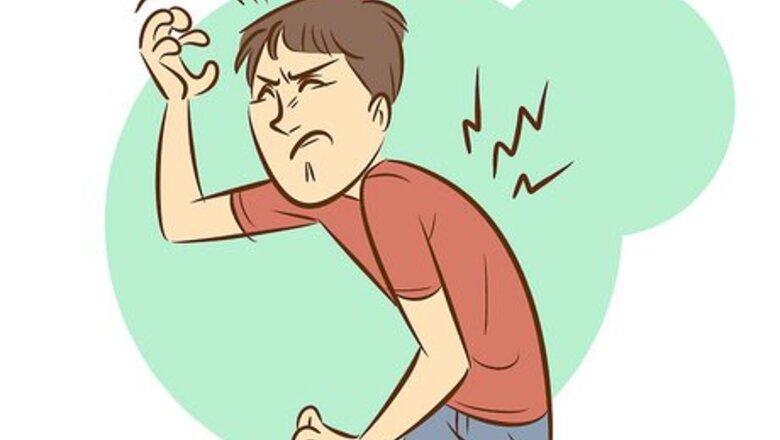
views
Faking a Sprain or Strain
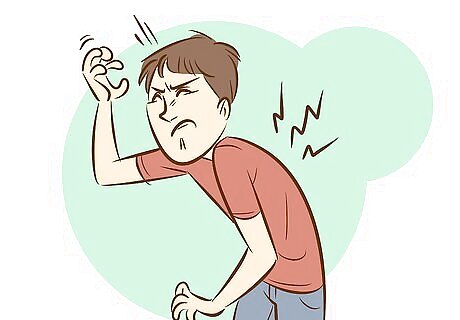
Act like part of your back feels painful and sensitive. Strains and sprains are two similar (but not identical) types of injuries with related symptoms that can affect the back. Strains involve pulled or torn muscles or tendons, while sprains involve pulled or torn ligaments. In either case, the injury will generally be accompanied by noticeable pain that gradually subsides over a week or two. To fake this convincingly, you'll want to pretend that part of your back (e.g., upper back, lower back, shoulder region, etc.) is painfully sore like a bad bruise. For example, let's say that you're faking a strain in your upper back after picking up a heavy box with bad posture. In this case, you might want to do the following to give a convincing performance: Grunt or shout in pain as soon as the injury "happens." Have the "pain" gradually subside over an hour or so until you're simply "sore." After this, wince whenever anything touches your upper back (e.g., a friend pats you on the back, you brush against a coat rack, etc.) Go slowly and tenderly when you have to press your upper back into anything (e.g., you have to sit back into a chair, etc.)
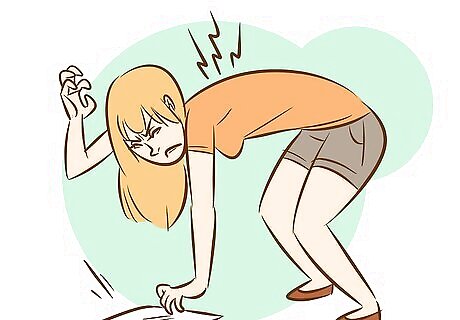
Act like the pain becomes more intense with movement. A real back strain or sprain can leave you with the feeling that you've just had a very intense workout, but in a bad way. As your body repairs your damaged ligament, tendon, or muscle, the area around it will remain sore to any sort of disturbance — even those caused by simply moving. Thus, if you're faking this sort of injury, you'll want to mimic pain and stiffness whenever you do anything that moves the part of your back you've injured. For example, if you're dealing with a fake upper back sprain, when doing the following sorts of things, you'll want to put on a pained facial expression, wince, and act like you don't have our normal amount of flexibility: Throwing something Picking something up from the floor Pulling something apart (e.g., packaging, tough food, etc.) Putting on or taking off a coat Raising a hand Doing any sort of high-impact exercise (e.g., running, jumping, etc.)
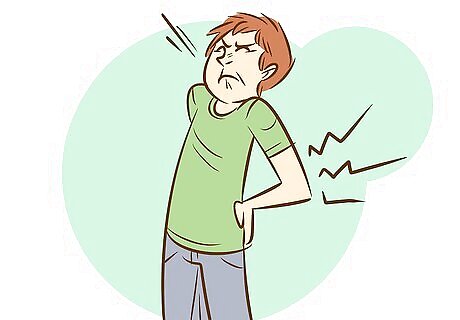
Optionally, fake cramps or spasms. Especially bad sprains and strains can lead the muscles in the area of the injury to misfire, causing painful contractions called cramps or involuntary motions called spasms. These can be intensely painful and can be triggered by using the affected muscles, though they can also sometimes occur randomly. A cramp should "hurt" a lot more than the simple soreness that comes with a healing sprain or strain, so try to sell your sense of pain and surprise. It will also cause your muscles to bunch up and become tight, so you'll probably want to flex your back muscles hard until the cramp "goes away" (which usually just takes a minute or two.) For example, acting out an upper back cramp might go like this: When people are around you, stoop to pick up something on the floor. Gasp and grab your lower back. Grimace in pain when people are looking. Slowly stretch back into a standing position and pretend like you are still in pain. Gradually decrease your "pained" performance throughout the rest of the day.

Make a convincing story for your sprain or strain. Acting like you have a sprain or strain in your back will naturally attract curious questions, so have a good story ready. In general, most sprains and sprains in the back are caused by putting excessive stress on the muscles, tendons, and/or ligaments (either all at once or over time). Sprains and strains have slightly different causes, so be sure to know the difference to keep your story consistent. See below. Strains are often caused by: Suddenly twisting or pulling the muscles in the back, especially when handling something heavy. Stressing the muscles by attempting to lift something too heavy. Fatiguing the back muscles too frequently, especially with improper form. Sprains are often caused by: A sudden blow to the back. A fall. The back being forced to stretch beyond its natural flexibility A sharp, sudden bend or twist in the back.

Know how to "treat" your sprain or strain. Enhance the illusion of your back sprain or strain by pretending to treat it. Most sprains and strains, though painful, can be treated with basic home remedies, so this should be fairly easy to fake! Real sprains and strains usually get better with the following remedies: Ice packs Warm compresses/baths Small doses of over-the-counter painkillers and anti-inflammatories (Acetaminophen/Paracetamol, Ibuprofen, etc.) Gentle massage (for cramps) Slowly stretching against the pull of the muscle (for cramps) Rest (for especially bad sprains or strains); doctors recommend no longer than two days, as any longer typically makes healing take longer. It is up to you whether you want to follow this rule for your fake injury.
Faking a Herniated Disc
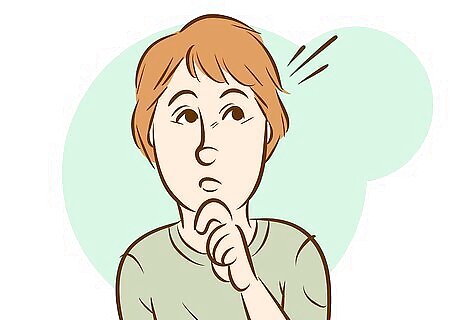
Decide whether or not to fake nerve pain. A herniated disc (also known as a ruptured disc, slipped disc, pinched nerve, and other names) is a type of injury that happens when one of the fluid-filled discs between the vertebrae of the back breaks, spilling fluid into the surrounding area which can cause painful inflammation and nerve pain. Generally, herniated disc injuries fall into one of two categories, so, to start, pick which one of these you want to fake: Pinched nerve: The actual disc itself (usually in the lower back) may or may not experience pain and inflammation. In addition to this, shooting pain called sciatica will occur in one or both of the legs or from the neck down the arm. Local Disc Pain: In this injury, just the area around the disc itself experiences pain and inflammation. The rest of this section will focus mostly on faking a pinched nerve injury because it's a little harder to do. To fake local disc pain, you'll want to act like your lower back is painfully sore and stiff (like a bruise) and that bending, twisting, or carrying heavy weights causes you intense pain.
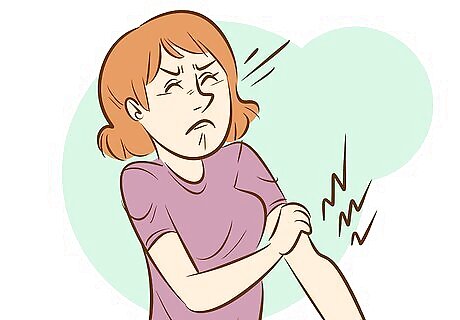
Fake shooting pains in your lower body or arm. One of the "textbook" symptoms of nerve pain from a herniated disc is the appearance of sudden, intense pains in one or more of the limbs after the injury. This is caused by the fluid from the broken disc pressing on the base of the nerve and creating the sensation of pain even though the limb is not actually injured. Most commonly, a herniated disc will cause these shooting pains in one or both legs, though they can also sometimes lead to pains between the neck and arm. Leg pain is usually most intense in the buttocks or hamstring, though it can also occur in the calf or foot. Arm pain can be centered in the neck, shoulder, elbow, hand, or the arm itself. In either case, the pain can be so bad that it causes you to grunt or wince and stop what you're doing, even if you're used to it. The pain usually occurs when performing an activity that puts stress on the lower back, not the limb itself. These include: Standing up or sitting down. Leaning back Bending or twisting Carrying something heavy Straightening one leg in front of you (because this tightens the lower back and hip muscles, not because it uses the leg muscles)

Pretend to experience numbness and/or tingling. Another symptom of herniated disc injuries that's indicative of nerve pain is a distracting "pins-and-needles" feeling which is almost exactly like what you'd get if one of your limbs fell asleep. This feeling can be accompanied by numbness, but it can also occur without removing the feeling from the affected area. Usually, this feeling occurs in the same spots as the nerve pain from the injury. The tingling feeling is not usually outright painful, so you don't need to "sell" it especially hard. However, you may want to make a point to mention it to add believability to your act. You can also pretend that using the affected limb while you have this tingling feeling gives you an oddly ticklish, numb feeling (again, just like if the limb had fallen asleep.)
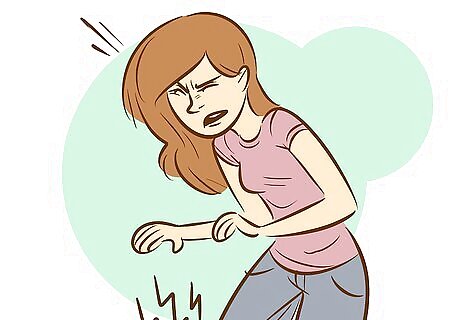
Act like the affected limbs have become stiff and weak. Nerve damage from a disc injury can cause the same muscles that are experiencing shooting pains to rapidly become weaker and less flexible than before, even if they don't look any different externally right away. These changes can even affect your posture and gait, especially when the pains are occurring in a leg. Sometimes, these problems are accompanied by twitching. For example, if you're faking leg pains from a disc injury, you might show the affects on our muscles like this: Having a limping, lopsided gait that keeps the affected leg stiffer than normal. This should be especially bad right after doing something to aggravate the injury (bending, twisting, standing up, etc.) Being unable to raise and straighten the affected leg very far in front of the body without pain and tightness (note that this is one of the clinical tests doctors will perform for this sort of injury) Being unable to perform activities that require leg strength without pain, like running, kicking, and especially high-impact activities like jumping.

Have a convincing story ready. Most herniated discs occur in the lower back, so the injuries that cause them are usually from activities that put excessive stress on the muscles and structures there. Some herniated discs occur from a single, definite injury, while others develop over time from bad posture or aging. Below are a few activities known to cause disc injuries that you may want to work into your story: Sharply bending or twisting, especially when holding a heavy weight Stressing the lower back by leaning back or forward with bad posture, especially when holding a heavy weight Using back muscles (rather than leg muscles) to pick up heavy things. Age-related wear and tear Rarely, receiving a sudden blow to the back or falling

Pretend to be seeking treatment. Most medical agencies recommend that herniated discs that cause nerve pain should be examined by a doctor. While you should not fake your symptoms to a doctor (as this is a gross waste of his or her time and expertise), you may want to pretend to be thinking of seeing a doctor to enhance your illusion. The pain from disc herniation can be lessened with anti-inflammatory treatments like ice packs, warm compresses, ibuprofen, and so on. However, these things alone will not make a disc herniation better — just temporarily decrease the pain. While most people with herniated discs eventually get better within six weeks, sometimes, more powerful pain medications and even surgery can be necessary.
Faking a Spinal Fracture
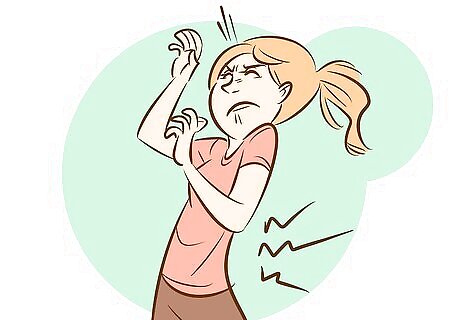
Pretend to have severe, debilitating pain in your back. A spinal fracture (also called a "vertebral fracture") is a very serious injury that can cause permanent damage to the body, though this is not necessarily guaranteed. Spinal fractures occur when one or more of the vertebrae in the back crack or come apart. The most immediate symptom is intense pain in the middle or lower back that makes it very difficult or impossible to continue doing what you're doing. This pain may be similar to what you might get from breaking another bone in your body (like, for instance, an arm bone), only localized in the back. Faking this sort of pain can be a challenge. When the "injury" occurs, you'll want to cry out in pain, fall to the ground, and immediately start wincing or writhing in intense pain. If you can cry on command, this is a good time to use your skill.

Act like the pain "flares up" when standing or moving. Like most broken bones, spinal fractures lead to persistent pain that lasts long after the initial injury. This pain is especially bad when doing anything that puts even minor stress on the back. This includes: Standing Walking Getting up or sitting down Bending Twisting
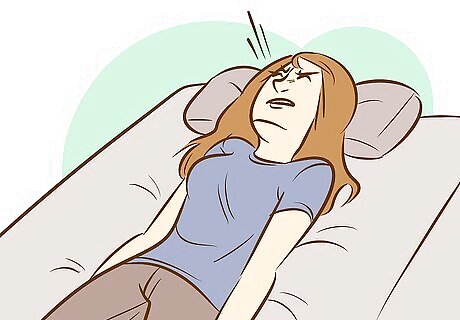
Keep faking moderate-level pain while lying down. One of the worst things about spinal fractures is that even lying in bed does not reduce the pain completely. Since it is impossible to lay horizontal without putting a little stress on some part of the back, even bed rest will be painful, though not as much as standing or moving around. Typically, for real fractures, this is mitigated with pain medication and narcotics.
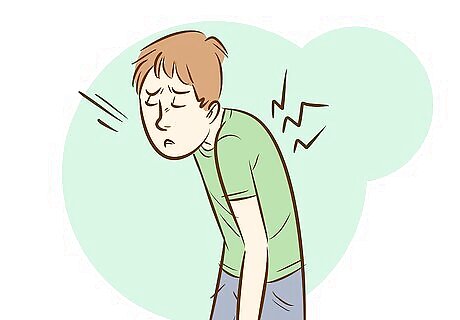
Keep your back curved or hunched. Because a spinal fracture results in actual physical damage to the bone structure of the back, it can cause noticeable changes in a person's stance and posture (though this was more common in the past when treatments for this type of injury were limited.) You may want to imitate this sort of damage as part of your act. Specifically, spinal fractures can cause: A "hunchback" appearance A decrease in height The inability to stand straight up
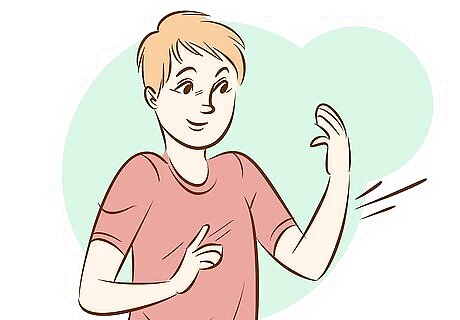
Optionally, fake nerve damage. When a spinal fracture occurs, the bone from the broken vertebra can press against the nerves of the spinal cord (though this does not always happen.) When this occurs, symptoms that are very similar to those from a pinched nerve caused by a herniated disc can occur. These include: Shooting pains in one or more limbs A numb, tingling sensation like the limb has fallen asleep Weakness and stiffness in the affected limbs In severe cases, a loss of bladder/bowel control
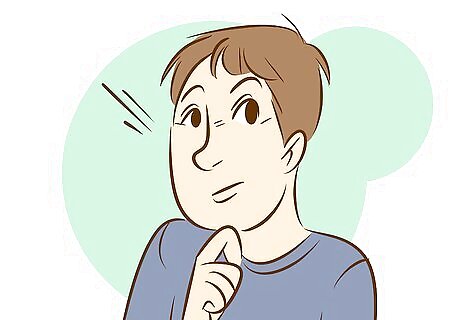
Have a good story ready. Spinal fractures are usually caused by sudden, violent injuries. It can be difficult to seriously fake these sorts of injuries — for instance, convincing your friends that you've just been in a car crash will require lots of work. However, knowing the sorts of injuries that can cause spinal fractures can still be helpful if you're pretending that you had one long ago. Examples of injuries that can cause spinal fractures include: Serious car crashes Long falls Gunshots Violent sports injuries (tackles, etc.) Combat injuries Note that all of the examples above will usually also give you other injuries like broken bones, scars, lacerations, and so on. If you are aiming for authenticity, be aware of this.
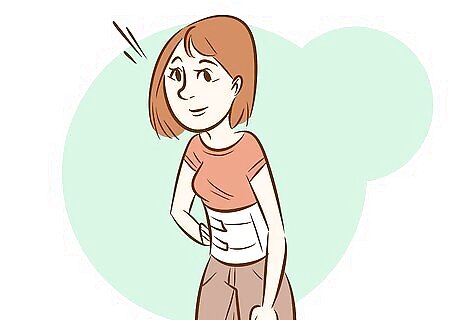
Pretend to be undergoing treatment. A spinal fracture is not something that can be treated in the home with a few over-the-counter pills. Spinal fractures require immediate medical attention to assess the damage done, administer drugs, and start addressing treating serious problems like nerve damage and so on. Don't seek actual treatment for your fake spinal fracture. As mentioned above, this is a blatant misuse of medical resources that can have major consequences. However, if you're pretending that you've already been dismissed from the hospital, you may want to do the following: Wear a back brace or a spinal cast Stay off of your feet Wear compression stockings (special socks designed to keep blood clots from forming in the legs for people who are bedridden) Imitate the nerve damage symptoms indicated above Take small doses of over-the-counter medications for pain and inflammation. Don't take actual medical-grade painkillers, as these can have serious side effects if misused.










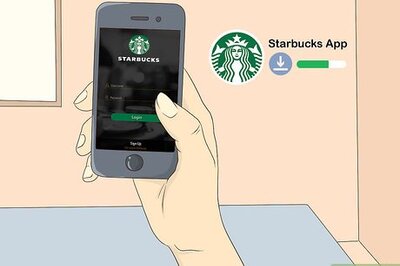



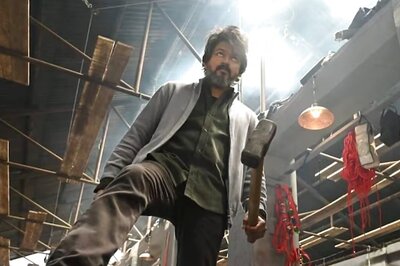


Comments
0 comment